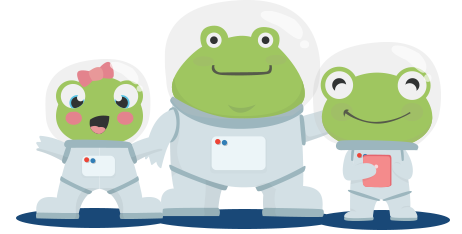
Reading Time: 3 minutes
HAPPY SPACE DAY!Space Day is an unofficial, educational holiday celebrated every year on the first Friday of May. This year it falls on the 7th. It was created in 1997 by Lockheed Martin (a global security and aerospace company). This day aims to promote STEM (science, technology, engineering, and mathematics) education in young people with the hope of inspiring them to follow a career in jobs related to space and space exploration.
The universe is almost incomprehensible to the human brain and with all the extraordinary things happening, it’s definitely a day worth reflecting on, especially as it’s most likely the future of humanity! Scientists’ knowledge of space is forever evolving and there is so much about space that we still don’t know. However, we know that it’s vast and full of billions of galaxies and stars, yet we haven’t even begun to explore planets in our own solar system.
There are lots of really amazing things we do know, so we’ve compiled a list of some of the most stellar facts that are out of this world!
- Scientists estimate the universe to be 13.8 billion years old and it has been constantly expanding since its formation during the Big Bang.
- The sun is considered to be an average size star. However, Earth could fit inside it more than one million times.
- Recent discoveries revealed by NASA show strong evidence that there is running water on Mars.
- If two pieces of the same metal touched in space they would be permanently bonded.
- Jupiter, Neptune, Saturn, and Uranus have no solid surface, therefore when we do venture that far, they will be impossible to walk on.
- A trip to Pluto on a plane would take more than 800 years.
- There are roughly 500,000 pieces of man-made space junk today, including rockets, satellites, and everyday items like spanners that have been dropped during the construction of the Space Station.
- There is a canyon called the Valles Marineris on Mars that is nine times longer and four times deeper than the Earth’s Grand Canyon.
- Car sized asteroids enter the Earth’s atmosphere roughly once a year, but fortunately, they burn up before reaching us!

- An asteroid called Vesta has the highest mountain known to man, measuring a monstrous height of 22km, which is three times taller than Mount Everest.
- Due to its light density, if Saturn could fit into a giant-sized bathtub, it would float.
- One year on Mercury is the equivalent of 88 Earth days. Mercury rotates around the Sun at an average speed of 107,000 mph, which is 40,000 mph faster than the speed of Earth.
- If you could stand on the Martian equator, the temperature at your feet would be warm but your head would be freezing cold!
- Neptune’s winds reach an astonishing 1,600 mph that create giant spinning storms that could swallow Earth up whole.
- The Hubble telescope can see as far as 10-15 billion light-years away.
- Astronomers have found a massive water vapour cloud around 10 billion light-years away, holding 140 trillion times the mass of the Earth’s oceans.
- The Sun accounts for 99.86% of our solar system with a mass of approximately 330,000 times of Earth.

- The importance of teaching children about space
Space is such an incredible and exciting topic for children to learn about. It can spark imagination and ignite curiosity, helping children become more creative thinkers and challenging them to question the unknown.
Teaching children about space will help them gain a greater appreciation for the frailness of Earth and how important it is to help keep the planet safe and healthy. Whether it’s through recycling, protecting wildlife, or trying to reduce pollution, it’s never too soon for them to contribute towards making a difference. Even if space isn’t their favourite topic, it can teach them that anything is possible and the sky is not the limit!
Are you looking for educational resources to inspire your little space voyagers? PrimaryLeap has got you covered, from space-themed colouring pages and spot the difference to word searches, sudoku, and masses of comprehensions.
No printer? No problem! Here are some fun online interactive activities all about our incredible solar system.

Reading Time: 3 minutes


